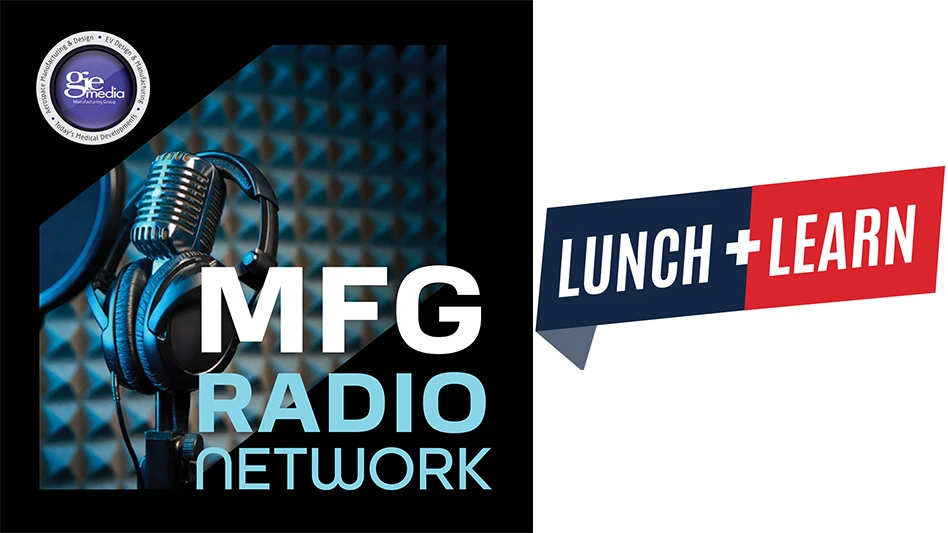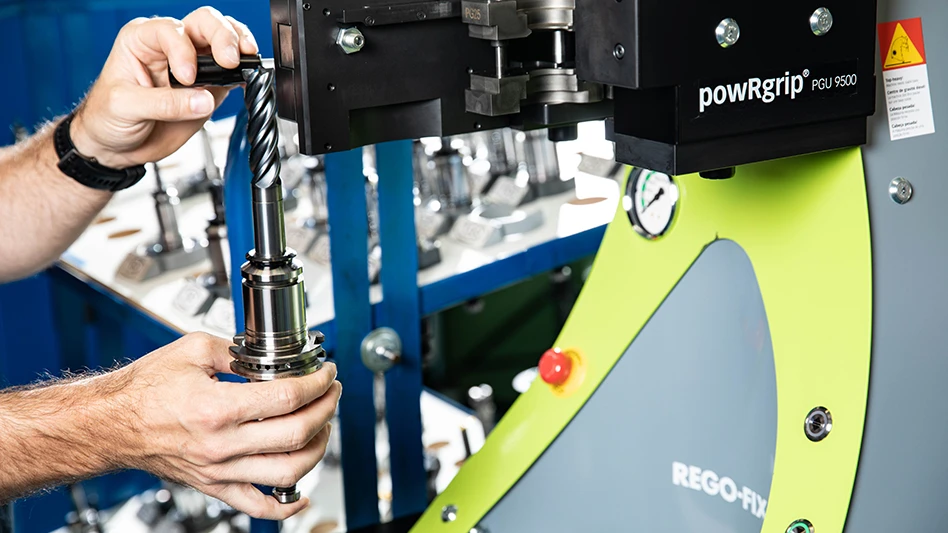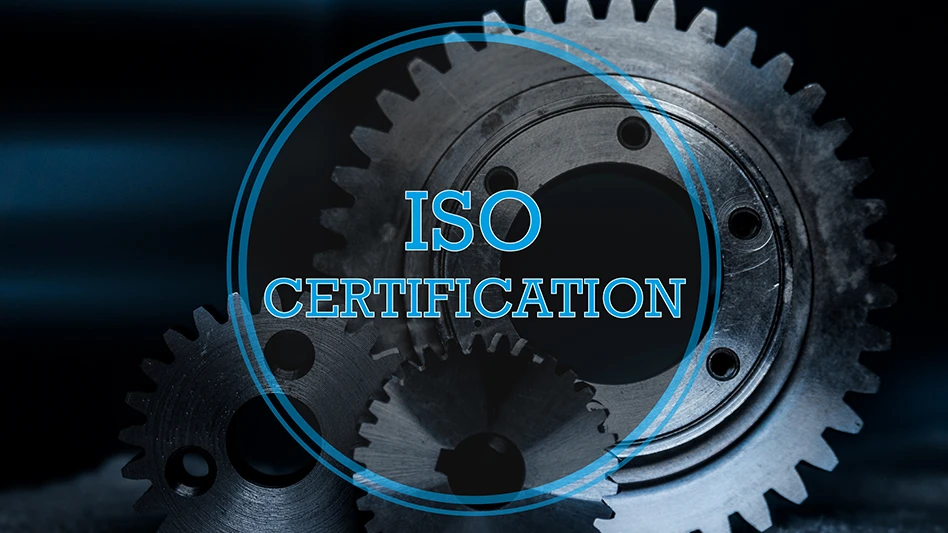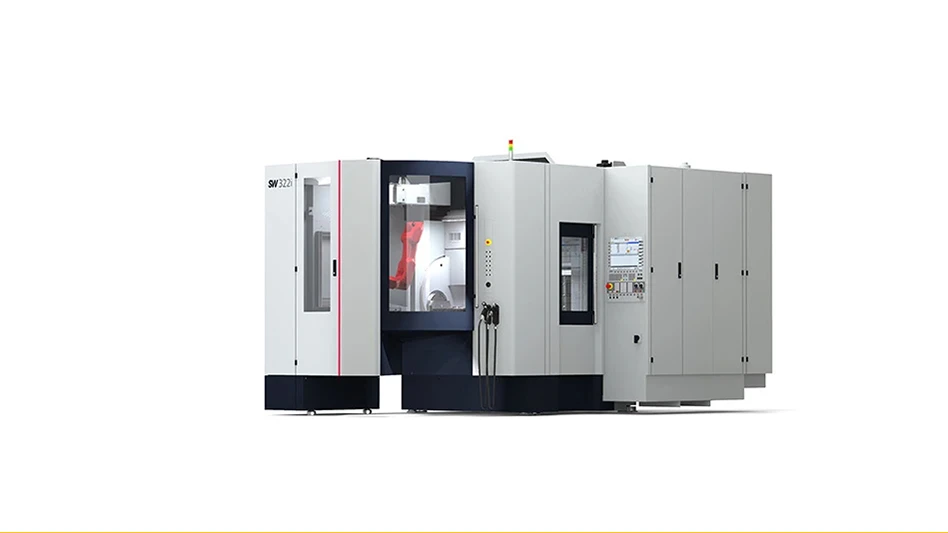 JTRC features three custom nozzles to offer laser additive solutions for any application or alloy. PDT’s three-beam nozzle design is actually an omni-directional nozzle with three single powder feeds, capable of cladding in almost any orientation. JTRC features three custom nozzles to offer laser additive solutions for any application or alloy. PDT’s three-beam nozzle design is actually an omni-directional nozzle with three single powder feeds, capable of cladding in almost any orientation. |
Proponents of laser beam welding (LBW) and electron beam welding (EBW) each pronounce the singular praises of their favored technology, but often the best solution for a customer is to use both technologies together. Both processes are well suited for joining components with complex geometries, and are capable of meeting the most stringent industry demands for metallurgical characteristics of final assembly.
Having both LBW and EBW technologies, in a single facility, can streamline the manufacturing process when a component's design incorporates multiple weld joints separately tailored for one process or the other. Examples include sensors, medical devices, and products that require sealing an inert gas or vacuum within the finished part.
Laser processing is required either when the size of the final assembly is too large for an EBW chamber, some component in an assembly is incompatible with vacuum processing (such as a liquid or gas), or when the weld is inaccessible to an electron beam source. EBW will be the primary choice when sealing the completed assembly with internal components under vacuum; when weld penetrations exceed 1/2"; when the material is challenging to initiate laser coupling; or when the weld must not have exposure to atmospheric conditions until it has cooled to an acceptable temperature.
Simpler Tooling, Shorter Cycle Times
Laser welding energy sources utilize either a continuous wave (CW) or pulsed output of photons. With CW systems, the laser beam is always on during the welding process. Modulation of pulsed systems is to output a series of pulses with an off time between those pulses. With both methods, the laser beam optically-focuses on the workpiece surface requiring welding. Delivery of these laser beams either are directly to the part, via classical hard-optics, or through a highly flexible fiber optic cable capable of delivering the laser energy to distant workstations.
 The high energy density of the laser enables the surface of the material to liquefy rapidly. This allows for a short beam interaction time compared to traditional welding methods such as GTAW (TIG welding) and similar processes. Energy has less time to dissipate into the interior of the workpiece. This results in a narrow heat-affected zone and less fatigue debit to the component.
The high energy density of the laser enables the surface of the material to liquefy rapidly. This allows for a short beam interaction time compared to traditional welding methods such as GTAW (TIG welding) and similar processes. Energy has less time to dissipate into the interior of the workpiece. This results in a narrow heat-affected zone and less fatigue debit to the component.
Beam energy output can be highly controlled and modulated to produce arbitrary pulse profiles. Production of weld seams may be by overlapping individual pulses, which reduces heat input by introducing a brief cooling cycle between pulses, an advantage for producing welds in heat sensitive materials.
Salay Stannard, materials engineer for Joining Technologies, an E. Granby, CT-based innovator in laser cladding, electron beam, and laser welding applications, notes that CW lasers can achieve penetrations up to and exceeding 0.5", while pulsed lasers typically achieve only 0.030" to 0.045". She says, "These results may vary between laser systems and are largely dependent on processing parameter choice and joint design."
Stannard adds, "Since the heat source in this type of welding process is the energy of light, the weld material's reflectivity should be considered. For example, gold, silver, copper, and aluminum require more intense energy input. Once melted, the reflectivity is reduced and the thermal conductance of the process progresses to achieve penetration."
As noted, the laser's high power density results in small heat-affected zones, ensuring that critical components are unharmed. This has particular advantage for surgical instruments, electronic components, sensor assemblies, and many other precision devices. Unlike EBW, LBW does not generate any X-rays, and manipulation is easy with automation and robotics. Generally, LBW has simpler tooling requirements as well, and there are no physical constraints of a vacuum chamber. Shorter cycle times translate to cost advantages without sacrificing quality. Table 1 lists the advantages of continuous wave and pulse LBW.
Higher Purity, Deeper Weld
Widely accepted across many industries, EBW permits the welding of refractory and dissimilar metals that are typically unsuited for other methods. Bombardment of the workpiece is with a focused stream of electrons travelling at extremely high speed. The kinetic energy of the electrons converts to heat energy, which in turn is the driving force for fusion. Usually no added filler material is required or used, and post-weld distortion is minimal. Ultra-high energy density enables deep penetration and high aspect ratios, while a vacuum environment ensures an atmospheric gas contamination free weld that is critical for metals such as titanium, niobium, refractory metals, and nickel-based super-alloys.
However, the main necessity for operating under vacuum is to control the electron beam precisely. Scattering occurs when electrons interact with air molecules; but, by lowering the ambient pressure, electrons are more tightly controlled.
 Modern vacuum chambers are equipped with state-of-the-art seals, vacuum sensors, and high performance pumping systems enabling rapid evacuation. These features make it possible to focus the electron beam to diameters of 0.3mm to 0.8mm.
Modern vacuum chambers are equipped with state-of-the-art seals, vacuum sensors, and high performance pumping systems enabling rapid evacuation. These features make it possible to focus the electron beam to diameters of 0.3mm to 0.8mm.
By incorporating the latest in micro-processor computer numeric control (CNC) and systems monitoring for superior part manipulation, joining parts of various size and mass occurs without excessive melting of smaller components. The precise control of both the diameter of the electron beam and the travel speed allows fusing of materials from 0.001" to several inches thick. These characteristics make EBW an extremely valuable technology.
The process puts a minimal amount of heat into the workpiece, which produces the smallest possible amount of distortion, allowing joining of finish-machined components without additional processing.
According to John Rugh, marketing and general sales manager for Enfield, CT-based PTR-Precision Technologies Inc., EBW is a process that will be in use for a long time. "Since most EBW is performed inside a vacuum chamber, it is an excellent fit for joining advanced materials used in such industries as aerospace, power generation, medical, and nuclear, which need to be produced in a vacuum environment to protect them from oxygen and nitrogen found in an open air environment.
"The cleanliness of the welding environment is one variable that you just do not have to worry about. In addition to providing the ideal welding environment, new EBW controls allow for fast electromagnetic deflection of the beam, which allows the heat input of the weld and surrounding area to be customized for optimum material properties," he adds.
For example, this rapid deflection allows pre-heating, welding, and post-heating, simultaneously, just by rapidly moving the beam location, focus, and power levels. This provides the ability to weld difficult or impossible to weld alloys.
Streamlining the Process
According to Rugh, LBW is commonly used for welding steel sheet metal components and machined components under 1/3" to 1/2" thick. LBW is also useful for joining parts that are not suitable for processing inside a vacuum chamber.
"Some parts and their associated welding fixtures may be too large to fit into the EBW chambers available," Rugh says. "Aside from size, if the components being welded contain liquids that would interfere with vacuum pumping, LBW would be a good choice."
It takes minutes to evacuate an EBW chamber and that time may not be worth it for a less sensitive weld.
If components are of high value – made of a material that would benefit from the vacuum environment such as titanium and nickel alloys – the welds are deeper than 1/3" to 1/2". However, if the laser beam has difficulty coupling with the welded material, such as aluminum alloys, EBW is often the process of choice over LBW.
While each technology has its benefits, in practical terms, many component designs incorporate both EBW and LBW. In these cases, performing both types of welding at the same facility definitely streamlines the manufacturing process.
Joining Technologies E. Granby, CT
joiningtech.com
PTR-Precision Technologies Inc. Enfield, CT
ptreb.com
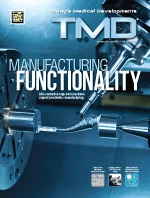
Explore the November December 2011 Issue
Check out more from this issue and find your next story to read.
Latest from Today's Medical Developments
- Tariffs threaten small business growth, increase costs across industries
- Feed your brain on your lunch break at our upcoming Lunch + Learn!
- Robotics action plan for Europe
- Maximize your First Article Inspection efficiency and accuracy
- UPM Additive rebrands to UPM Advanced
- Master Bond’s LED415DC90Med dual-curable adhesive
- Minalex celebrates 60 years of excellence in miniature aluminum extrusions
- Tormach’s Chip Conveyor Kit for the 1500MX CNC Mill
